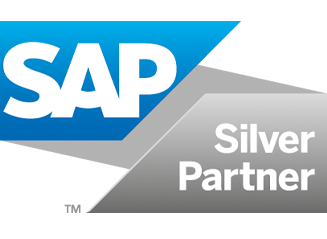In this episode, we talk about new regulations for Malaysia with our Regulatory Affairs Associates Zehra Dilara Karadeniz and Cansu Gölpınar.
In this podcast series, our goal is to keep you informed about current regulations and innovations in tax technology around the globe.
Today, we’re focusing on Malaysia’s journey toward implementing e-invoicing. The Malaysian government is taking steps to enhance the digital economy by rolling out e-invoicing in a series of stages. This initiative is designed to improve tax administration efficiency, reduce compliance costs, and streamline business operations, as highlighted by the Ministry of Finance.
- What is the latest update announced by Malaysia regarding the e-invoicing mandate, including details about the grace period? Can you provide more information about it?
The Inland Revenue Board of Malaysia ( in short, IRBM) released an important update on the mandatory implementation of e-invoicing on July 26, 2024. In its media statement, the IRBM announced a six-month grace period starting from August 1, 2024. The purpose of this grace period is to provide businesses with additional flexibility as they adapt to the new e-invoicing system. For the first group of taxpayers, those with an annual turnover or revenue of more than RM100 million, the interim relaxation period will be from August 1st 2024 until January 31st, 2025.
Another point is that the taxpayers can issue consolidated e-invoices for all transactions during the grace period. This includes all types of activities and industries, including self-billed e-invoices. All the details of the transaction should be listed in the “Description of the product or service” field. If a buyer requests an e-invoice, the seller will be able to issue a consolidated e-invoice instead of issuing individual invoices for each transaction.
Lastly, penalties under the Income Tax Act, which would normally apply to non-compliance with the e-invoicing rules, will not apply during this period, as long as taxable persons comply with the e-invoicing group rules. I should also mention one more important advantage of implementing the e-invoicing rules in Malaysia: to acknowledge taxpayers who implement e-invoicing on time without using the provided relaxation, a reduction in the capital allowance claim period from three (3) years to two (2) years will be offered for the purchase of ICT equipment and computer software packages, effective from Assessment Year 2024-2025.
- How do you think this grace period will affect businesses in Malaysia?
The IRBM’s announcement aims to ease the transition for businesses to the mandatory e-invoicing system. By allowing consolidated e-invoices and suspending penalties during the grace period, businesses can adjust their processes without facing compliance penalties. Additionally, early-adopter incentives are designed to encourage faster transition, potentially accelerating the digitization of invoicing processes across industries in Malaysia.
- Despite the grace period for e-invoicing, Malaysia is set to implement consolidated e-invoices in September 2024. Can you explain what consolidated e-invoices are and how they will be used?
Consolidated e-invoices allow businesses to issue a single invoice for multiple transactions within a specific period. This reduces administrative burden and simplifies reporting by consolidating multiple sales into one document. They reduce the administrative workload for both businesses and tax authorities by simplifying the invoicing process and decreasing the number of individual invoices to be processed. This can also lead to more accurate financial reporting and easier auditing. Through this mandate, the Malaysian government also ensures that taxpayers are still on the road to fully implement e-invoicing obligations in the future.
- How does Malaysia’s approach to e-invoicing compare with other countries in the region?
Malaysia’s approach to e-invoicing, which includes a six-month grace period to allow consolidated e-invoicing and a temporary suspension of penalties, is designed to help businesses transition to the new system. This approach is relatively flexible in comparison to other countries in the region. Singapore, for example, has been promoting e-invoicing since 2019 through a nationwide e-invoicing framework that encourages businesses to adopt the PEPPOL network. The Singapore government has provided grants and other forms of support to ease the transition, but penalties for non-compliance are not as lenient. Indonesia and the Philippines, on the other hand, have been more rigorous when it comes to implementing e-invoicing. Indonesia’s e-invoicing system, for example, makes the use of e-invoices mandatory for VAT-registered businesses.
They also do not offer a grace period for compliance. The Philippines also introduced an e-invoicing system with mandatory requirements for large taxpayers and exporters, as well as penalties for those who do not comply from the outset.
Malaysia’s approach, with its temporary leniency and focus on easing businesses into the system, reflects a more gradual and supportive transition strategy than some neighbors’ stricter and more immediate enforcement.
- How does the e-invoicing mandate impact business-to-business (B2B) transactions in Malaysia?
The e-invoicing mandate will be a game changer for B2B transactions in Malaysia. This is aimed at streamlining processes, reducing errors and improving compliance. Companies will need to invest in new systems or integrate existing systems to comply with the mandate. However, the long-term benefits of improved cash flow, reduced administrative costs and enhanced data analysis will justify the initial investment.
- Does this only cover B2B transactions, or are B2G and B2C transactions also included?
All types of transactions (including B2B, B2G and B2C), are included in the Tax Act of Malaysia. Taxpayers who are engaging in these transactions must comply with e-invoicing rules and regulations.
7.What are the specific requirements for business-to-government (B2G) invoicing under the new regulations?
Businesses will need to include certain data elements in their e-invoices to ensure compatibility with government systems. This may include detailed information on goods or services provided, prices, tax details, and unique identifiers for both business and government. Furthermore, businesses dealing with government entities should carefully review and comply with these specific requirements to ensure smooth operations and avoid potential penalties.
8. Are there any special considerations for cross-border e-invoicing, and how do they differ from domestic e-invoicing requirements?
Cross-border transactions involve transactions between Malaysian buyers and foreign suppliers and vice versa. When there is a foreign supplier and a Malaysian buyer, the Malaysian buyer is required to issue a self-billed e-invoice to document said expenditure, as the foreign supplier is not mandated to implement the Malaysian e-invoice. A self-billed e-invoice is required to support the transaction for tax purposes.
- Alright, then. Can you tell us how the e-invoicing system handles self-billing transactions, and what are the compliance requirements for businesses engaging in self-billing?
Well, the government of Malaysia demands not only proof of income but also proof of expenses. That is to say, in case of a transaction with a foreign supplier, Malaysian businesses will have to do self-billing and report the purchases and receipt of services from foreign suppliers, as I just mentioned. There are other transaction types listed in the regulation, such as payment to agents, dealers, distributors; e-commerce; and transactions with individuals (who are not business entities). If a buyer is required to issue a self-billed e-invoice, the buyer will assume the role of the supplier to be the issuer of the e-invoice and submit it to the IRBM for validation. Once validated, the buyer would be able to use the validated e-invoice as proof of expenditure for tax purposes. As such, the other party is no longer required to issue an e-invoice if a self-billed e-invoice has been issued for that transaction.
- We know that some responses are provided by the government after the document is sent, such as QR codes as proof of validation. Are QR codes included on e-invoices, and what is their purpose in the e-invoicing system?
Yes, QR codes are mandatory on e-invoices to allow quick and easy verification of invoice details. They enable businesses and tax authorities to access invoice information quickly, improving efficiency and reducing errors.
After an e-invoice is validated, the supplier must share it with the buyer. The visual representation of the e-invoice from the MyInvois Portal includes a QR code, which can be used to verify the existence of the document and the status of the e-invoice through the portal. Our solution generates the QR code and includes it in our standard layout.
- Let’s get technical. Is the required format XML, or something else?
That is correct. The required formats are either XML or JSON. Taxpayers must configure their systems or engage a technology provider to help generate e-invoices in required XML or JSON format with mandatory and optional fields according to the defined structure.
There are 55 data fields that are required to issue an e-Invoice. These fields are grouped into eight (8) categories:
- Address
- Business Details
- Contact Number
- Invoice Details
- Parties
- Party Details
- Payment Info
- Products / Services
- Which version of Document Types should taxpayers use to test and validate digital signatures in the Sandbox environment?
Both versions, meaning Version 1.0 and Version 1.1, are available on the Sandbox. Taxpayers interested in testing and validating Digital Signature should use Version 1.1 for their Sandbox testing.
- What are the key differences between Version 1.0 and Version 1.1?
Digital signatures can only be validated in Version 1.1.
- Why was Version 1.1 introduced?
This was introduced to allow taxpayers to test the digital signature validation after submitting invoices in the Sandbox environment.
- Do I need to submit the documents in both Version 1.0 and Version 1.1?
Taxpayers are given the option to submit documents in Version 1.0 or Version 1.1, depending on their own testing requirements. If a taxpayer intends to test a digital signature, it is recommended to submit it using Version 1.1. Version 1.0 is available for submission of documents without digital signature validation.
- Can Version 1.0 be used for submission from 1 August 2024?
Taxpayers may submit documents using document Version 1.0 without the requirement for digital signature validation until such time as the Lembaga Hasil Dalam Negeri Malaysia (LHDNM) issues an official notice concerning the retirement of Version 1.0. Nonetheless, it is strongly recommended that taxpayers adopt Version 1.1, which incorporates digital signature validation, to ensure the authenticity of the supplier’s identity.
- What are the advantages and challenges of using APIs versus manual uploads for e-invoice submission?
APIs offer faster, more efficient submissions with reduced risk of errors, making them ideal for high-volume businesses. Manual uploads are simpler for small businesses with fewer invoices but may be more time-consuming and prone to data entry errors.
Last but certainly not the least, as we approach the end of our podcast, I want to highlight the advantages of using e-invoicing instead of paper invoices in relation to Malaysian e-invoicing. As clearly stated by the European Commission, the adoption of e-invoicing enhances business competitiveness and delivers significant economic benefits. It replaces paper invoices with electronic forms, reducing errors, costs, and manual work, while automating processes to improve cash flow. E-invoicing also automates compliance reporting, like VAT returns, and integrates digital payment solutions for better finance access. Overall, e-invoicing reduces administrative burdens and operational costs, fostering innovation and competitiveness across the economy.
To get more information about the process and our related solutions, please contact us at contact@snitechnology.net.





